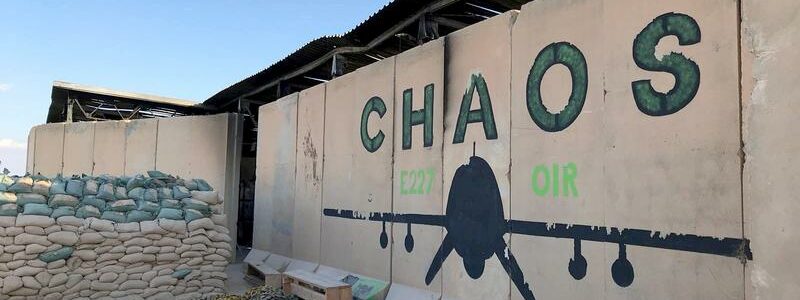
Iranian commander urged escalation against US forces at Iraq meeting, sources say
(Reinstates dropped word ‘to’ in para 11)
BAGHDAD (Reuters) – A senior Iranian Revolutionary Guard commander urged Iraqi Shi’ite militias to step up attacks on U.S. targets during a meeting in Baghdad last week, three militia sources and two Iraqi security sources familiar with the gathering said.
American forces in Iraq and Syria were attacked several times following the visit by an Iranian delegation led by Revolutionary Guards intelligence chief Hossein Taeb, which came after deadly U.S. air strikes against Iran-backed militias at the Syrian-Iraqi border on June 27.
While encouraging retaliation, the Iranians advised the Iraqis not to go too far to avoid a big escalation, three militia sources briefed on the meeting said.
The Iranians did, however, advise them to widen their attacks by retaliating against U.S. forces in Syria, according to one of the three militia sources, a senior local militia commander briefed on the meeting.
The flare-up comes as significant differences cloud diplomatic efforts to revive the Iranian 2015 nuclear agreement, which was abandoned by former U.S. President Donald Trump but which Iran wants reinstated to allow it to resume key exports of oil.
A senior official in the region, who was briefed by Iranian authorities on Taeb’s visit, said that Taeb met several Iraqi militia leaders during the trip and conveyed “the supreme leader’s message to them about keeping up pressure on U.S. forces in Iraq until they leave the region”.
Since the U.S. air strikes, attacks on U.S. troops and personnel or bases where they operate have intensified in Iraq and widened to eastern Syria.
Iran’s foreign ministry did not immediately respond to questions from Reuters for this article, and officials at the Revolutionary Guards public relations office were not immediately available for comment.
Iran’s U.N. envoy this month denied U.S. accusations that Tehran supported attacks on U.S. forces in Iraq and Syria, and condemned U.S. airstrikes on Iranian-backed militants there.
There was no immediate response from the Iraqi government or the prime minister’s office to questions about the meeting.
The sources to whom Reuters spoke did so on condition of anonymity due to the sensitivity of the subject.
U.S.-IRANIAN RIVALRY
The Arab world’s biggest Shi’ite majority country, Iraq has been a theatre of U.S.-Iranian rivalry since the U.S.-led invasion that toppled Sunni leader Saddam Hussein in 2003.
The Shi’ite militias have been waging a sustained and increasingly sophisticated campaign against U.S. forces which, after withdrawing in 2011, returned to Iraq in 2014 at the head of a coalition to fight the Islamic State group.
But the attacks, including explosives-laden drones, have gone up a gear since the U.S. air strikes, which Iran-aligned militias say killed four of their members.
The two Iraqi security sources close to the activities and operations of the groups said the Iranians handed their Iraqi allies aerial maps of U.S. positions in eastern Syria at the July 5 meeting.
The Pentagon said it was deeply concerned about the attacks, including a July 7 rocket barrage on the Ain al-Asad air base in which two American service members were wounded.
A senior Guards figure, Taeb is a mid-ranking Shi’ite cleric seen by insiders and analysts of Iranian politics as close to Supreme Leader Ayatollah Ali Khamenei.
The senior official in the region said Khamenei had sent Taeb to Iraq after visits there by Brigadier General Esmail Ghaani, appointed last year as head of the Guards’ expeditionary branch, the Quds Force, had failed to yield an escalation.
An Iraqi government official said it appeared Iran was seeking to use its allies in Iraq to apply pressure for a return to the nuclear deal, under which harsh U.S. sanctions would be lifted in return for curbs on Iran’s atomic activities.
A senior Iranian diplomat said Taeb’s visit to Baghdad indicated that Khamenei was getting directly involved in Iraq affairs after the killing of General Qassem Soleimani, a previous Quds Force head, in a U.S. drone strike in Iraq early last year.
A spokesman for one of the Iranian-backed militia groups hit by the U.S. air strike last month confirmed that the recent attacks were carried out by the Iraqi Islamic Resistance, a reference to the Shi’ite Iran-backed groups.
“The military escalation against the American forces will continue until all their combatant forces leave Iraq,” Kadhim al-Fartousi, the spokesman for the Kataib Sayyed al-Shuhada faction, told Reuters.
Saad al-Saadi, a senior official in the political office of the Iranian-backed group of Asaib Ahl al-Haq, said if the Americans continued to strike at militias, then more effective attacks on U.S. forces could be expected anywhere in Iraq and Syria.
The meeting was held in Baghdad’s upscale Jadiriya neighbourhood in a villa just across the river Tigris from the U.S. embassy, two of the local militia commanders said.
Iran and the United States began indirect negotiations in Vienna in early April to restore the nuclear deal. No date has been set for further talks, which adjourned on June 20.
Some Western and Iranian officials have said the talks are a long way from a conclusion, as disagreements on which U.S. sanctions should be lifted and on the nuclear commitments that Iran has to make and when still remain in place.
Source: Read Full Article